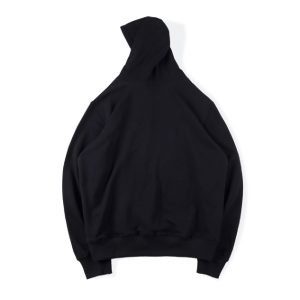
In the world of fashion, clothing often serves as more than just self-expression or aesthetic display—it becomes a canvas for history, Denim Tears resistance, and political commentary. Denim Tears, a brand created by designer and cultural critic Tremaine Emory, stands at the intersection of style and storytelling. At its core, Denim Tears is not merely a label producing trendy streetwear; it’s a statement about America’s painful and complex relationship with cotton. With every stitch, print, and panel, the brand confronts the romanticized view of cotton and re-centers the narrative around its violent past rooted in slavery and exploitation.
Reclaiming Cotton’s Legacy
Cotton is often associated with softness, comfort, and everyday Americana. From blue jeans to t-shirts, cotton weaves through the very fabric of modern life, often seen as neutral or even wholesome. But Denim Tears demands we reexamine this perception. The brand’s iconic Cotton Wreath collection—featuring sweatshirts and jeans emblazoned with a ring of cotton flowers—is not a celebration but a critique. It serves as a visual reminder of the brutality enslaved Africans endured while picking cotton in the American South.
Emory forces the viewer to reckon with the reality that cotton, though physically soft, has a violent history. In the United States, cotton was king, and its reign was upheld by the forced labor of millions. This profitable crop funded empires, built institutions, and shaped the country’s economy. Denim Tears urges us to question the innocence of something so commonly worn yet historically blood-soaked.
Art as Resistance
Fashion has always been a part of cultural resistance, from the Black Panthers’ berets to punk’s DIY ethic. Denim Tears fits squarely within this tradition, but it does so with a cerebral twist. Emory’s work is not only aesthetically compelling but also deeply researched. Each collection references a specific period or set of experiences in Black history. Through garments, he tells stories that have long been excluded from mainstream fashion narratives.
The brand’s first major release, which debuted in collaboration with Levi’s, transformed the classic jean jacket and denim pants into historical documents. Rather than merely releasing a product, Emory created a message: that Black culture, Black labor, and Black suffering are sewn into the very origins of American fashion, particularly denim. The Levi’s collaboration was especially powerful given Levi Strauss’s own history during the 19th century, tying the brand’s present to America’s racialized past.
Denim as a Historical Canvas
Denim, often seen as a symbol of rugged individualism and freedom, is recontextualized in Denim Tears as a material of bondage and erasure. Emory turns this symbol on its head. For centuries, denim has clothed workers, rebels, and artists. But long before it became a symbol of American cool, it was worn by enslaved people, forced into labor fields under unbearable conditions. It was durable, cheap, and functional—perfect for an enslaver’s utilitarian needs.
When Denim Tears reintroduces denim into the conversation, it’s not to discard it but to reclaim it. Emory isn’t saying we shouldn’t wear cotton or denim; rather, he’s demanding that we wear it with awareness. By creating clothes that look directly into the eyes of America’s racial history, Denim Tears invites wearers to participate in a deeper dialogue every time they put on a piece.
Personal and Political: The Vision of Tremaine Emory
Tremaine Emory’s work extends beyond design. As a thinker and storyteller, he sees fashion not just as an industry but as a form of cultural education. His influences are deeply personal. Born and raised in Queens, New York, Emory grew up with an awareness of both his heritage and the systemic forces that continue to affect Black communities. His designs are often accompanied by writing, historical imagery, or references to Black thinkers like James Baldwin, W.E.B. Du Bois, and bell hooks.
In doing so, Emory turns clothing into conversation starters. He believes fashion can bear witness to historical truth, honor the dead, and empower the living. His garments become tools of remembrance, urging us not to forget the legacy behind the materials we wear.
Cultural Impact and Controversy
Denim Tears does not strive to make everyone comfortable—and that is exactly the point. The brand’s aesthetic is provocative, and some viewers find the use of cotton imagery disturbing. But discomfort is intentional. The goal isn’t to make cotton palatable or to whitewash its history but to present it in its raw, haunting context.
In an industry so often focused on novelty, escapism, and trend cycles, Emory’s refusal to “move on” is radical. Denim Tears reminds us that America cannot truly progress without first confronting its original sins. And for fashion to be truly inclusive, it must acknowledge how it has been built—literally and figuratively—on the backs of Black labor.
Beyond Commercialism
Many fashion brands speak of activism in broad, commodified terms, slapping slogans on t-shirts and calling it a revolution. Denim Tears, by contrast, avoids hollow gestures. The brand’s activism is embedded in its DNA—not as a marketing gimmick, but as a lifelong project of truth-telling. Emory frequently collaborates with artists, musicians, and institutions to amplify messages about Black history, community, and healing.
He’s also vocal about the need for systemic change within the fashion world, critiquing tokenism, cultural appropriation, and the absence of Black voices in leadership roles. Denim Tears doesn’t just demand that we remember slavery; it insists we also examine its afterlives—in policing, incarceration, education, and economic disparity.
Wearing the Message
Wearing Denim Tears is not a passive act. It’s a decision to carry a narrative that many would rather ignore. It’s a refusal to let history be sanitized. It’s fashion as education, resistance, and ceremony.
In a capitalist system that often exploits Black culture while erasing Black pain, Denim Tears emerges as a fierce refusal. It insists that Black life, Black death, and Black resistance be acknowledged—not just in February or during social media cycles of awareness, but every day. Cotton may no longer be picked by enslaved hands, but its legacy endures. Emory’s work ensures that this truth isn’t buried beneath branding and trend forecasts.
Conclusion: Tears in the Fabric
Denim Tears is not simply a fashion brand—it’s a movement, a reckoning, and a memorial stitched in cotton. It asks the uncomfortable Denim Tears Tracksuit question: what does it mean to wear the history of your oppression? And how do we make space for truth in industries built on forgetting?
In reframing cotton as both a symbol of suffering and survival, Denim Tears offers no easy answers. But it does offer a way forward—through truth, through art, and through the radical act of remembering. In a world quick to forget, sometimes the most powerful thing we can do is wear our tears on our sleeves.


